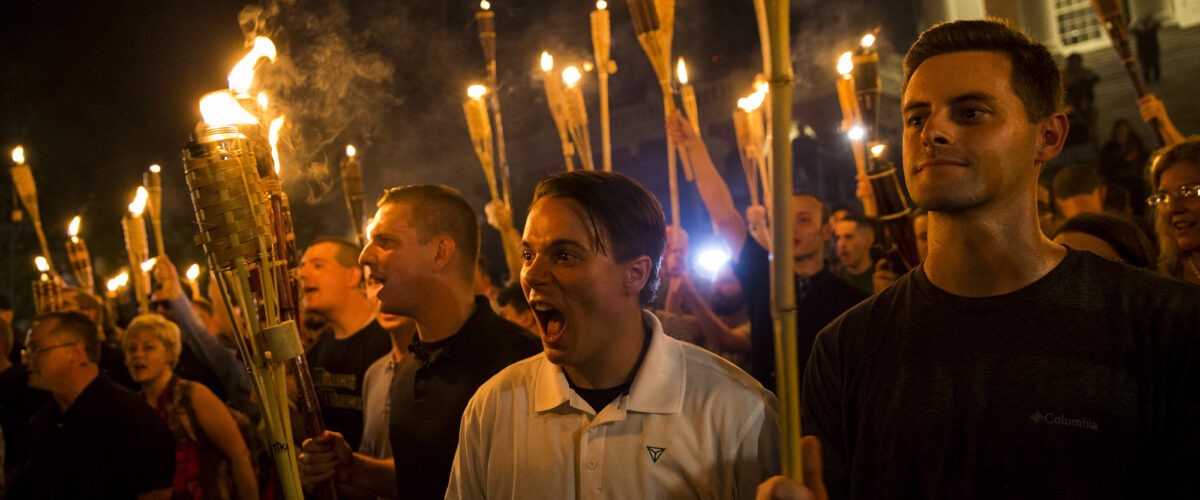An intelligent foreigner, making his observations at Washington at this time, would be puzzled to determine whether the Americans had a Government, or not. There are the names: The Executive, the Congress, the Judiciary; but what is the executive question, what the congressional question, what the judicial question, it appears impossible to decide. It is a remarkable fact that at Washington today, there is not a single well-de-fined department of political power!
Southerner Edward Pollard wrote those words in 1866, in Lost Cause: A New Southern History of the War of the Confederates, coining the term and re-mythologizing the post-Appomattox Confederacy.
In a 1980 work, Baptized in Blood: The Religion of the Lost Cause, University of Mississippi historian Charles Reagan Wilson wrote, “At the end of the Civil War, Southerners tried to come to terms with defeat, giving rise to the Lost Cause.” Wilson cited Pollard’s call “for a ‘war of ideas’ to retain the Southern identity,” then commented: “The South’s religious leaders and laymen defined this identity in terms of morality and religion.”

Bill Leonard
Wilson insisted that “Christian clergymen were the prime celebrants of the religion of the Lost Cause.” They “used the Lost Cause to warn Southerners of their decline from past virtue, to promote moral reform, to encourage conversion to Christianity, and to educate the young in Southern traditions; (and) in the fullness of time, they related it to American values.”
In other words, they hoped a revival of those antebellum religious and cultural traits would make the South, and ultimately the entire nation, great again.
In 2022, it appears that Edward Pollard’s call for a “war of ideas” grounded in Lost Cause mythology never really expired and is making a considerable comeback. Surprisingly, elements of, or parallels to, the Lost Cause myth have returned with a vengeance, not simply in the American South, but across the nation. Lost Cause-analogous visions of America appear to be winning the contemporary “culture war” in various state and national political contexts and in segments of American Christianity.
Minimizing the impact of slavery
The parallels between Lost Cause agendas then and now are striking. In The Enduring Lost Cause: Afterlives of a Redeemer Nation, editor Edward R. Crowther introduces the volume by noting that one of Pollard’s Lost Cause “themes” involved substituting “sectionalism” for slavery as a primary cause of the Civil War.
“Pollard urged Southerners to minimize the significance of slavery as a central reason for the war.”
Pollard urged Southerners to minimize the significance of slavery as a central reason for the war. Instead, he substituted “sectional animosity” as evidence of multiple disputes between North and South, thus softening the impact of race and racism on Southern culture and secession. Chattel slavery was “merely an incident,” rather than the prime source of the war. Pollard even challenged the use of the term “slavery” by claiming “the system of servitude in the South … was really the mildest in the world.”
The appeal to sectionalism blunted the role of slavery, thus lessening its impact on the North/South schism, while undermining the dehumanizing injustices slavery perpetuated.
Parallel efforts to temper the history of slavery, Jim Crow and race in America occur today. The Chalkbeat educational organization tracked at least 36 states, including every state in the Old South, that has enacted legislation to “restrict education on racism, bias, the contributions of specific racial or ethnic groups to U.S. history, or related topics,” in public schools, while only 17 states have expanded their race-related curriculum.
Many of these legislative actions implicitly or explicitly target Critical Race Theory, a law school-oriented program, as a source of “divisive concepts” foisting “political indoctrination” on public school students. Others warn that overemphasis on historical and contemporary racial divisions obscure America’s true identity as an “equitable democracy.”
“Opposition to Critical Race Theory has become … a Lost Cause strategy with contemporary implications.”
In a Brookings Institution essay, Rashawn Ray and Alexandra Gibbons write: “CRT does not attribute racism to white people as individuals or even to entire groups of people.” Rather, it states “that U.S. social institutions … are laced with racism embedded in laws, regulations, rules, and procedures that lead to differential outcomes by race.”
Where promoting sectionalism was a 19th century way of undermining the role of slavery, opposition to Critical Race Theory has become a vehicle for limiting instruction and banning books related to past and present racial injustice, a Lost Cause strategy with contemporary implications.
The rise of the Klan and other militias
Lost Cause myths gave birth to the Ku Klux Klan, a group whose racism was romanticized in books like The Clansman, written in 1905 by Baptist preacher and Wake Forest University graduate Thomas Dixon to describe how “the young South, led by the reincarnated souls of the Clansmen of Old Scotland, … saved the life of a people” and formed “one of the most dramatic chapters in the history of the ARYAN race.”
The Klan became and remains a source of white supremacy, racism and violence. Few of us can forget the July 2017 torchlight parade of Klansmen marching through Charlottesville, Va., chanting, “Jews will not replace us.” More recently, the prosecution of members of the Proud Boys and other self-styled militia groups after the Jan. 6, 2021, insurrection at the U.S. Capitol was evidence that Lost Cause-parallel movements’ militia are with us yet.
Religion and the Lost Cause
In Baptized in Blood, Charles Reagan Wilson shows how Southern clergy and laity promoted a unique approach to civic piety linking the Lost Cause and civil religion in ways that fostered “a Southern Way of Life.” He cites Will Herberg’s description of a national civil religion marking “the American Way of Life, a set of beliefs that were accepted and revered by Protestants, Catholics and Jews.” In it, “democracy” was the basis of that public religion, evident in documents like the Declaration of Independence and the Constitution; symbols including anthems, songs, flags and pledges; and shared beliefs in “life, liberty and the pursuit of happiness.”
“Without the Lost Cause, no (Southern) civil religion would have existed.”
Wilson distinguishes between Southern and American civil religion, dating essentially from the post-Civil War era, writing: “Without the Lost Cause, no (Southern) civil religion would have existed.” Here’s where Southern Protestant churches and clergy stepped in. Wilson observes: “The religious culture of Dixie, including the Confederate memory, promoted the self-image of virtue and holiness and thus helped maintain the cohesiveness of Southern society in a critical postwar period.”
In God’s Last and Only Hope: The Fragmentation of the Southern Baptist Convention, I suggested that Lost Cause identity shaped “the Great Southern Myth,” the assertion that “the people who lost the war retained the vision. Even in defeat, the Southern people were more righteous, more decent, more moral and more God-fearing than their Yankee counterparts ever could be.” Yet underneath the rhetoric of moralism, sectionalism and theological orthodoxy was the abiding scourge of racism, Jim Crow and a racially segregated society.
In 2022, Lost Cause-like mythology seems particularly evident in religion-related issues and divisions in both the secular and sacred spheres, with disputes over national, religious, political, racial and gender identity, to name only a few.
A May 9 New York Times article highlights a “seismic shift” dividing evangelicals, noting: “Across the country, theologically conservative white evangelical churches that were once comfortably united have found themselves at odds over many of the same issues dividing the Republican Party and other institutions. The disruption, fear and physical separation of the pandemic have exacerbated every rift.”
The article depicts white evangelicals as divided into two camps: “those embracing Trump-style messaging and politics, including references to conspiracy theories, and those seeking to navigate a different way.”
And what of that “different way?” Surely it requires not re-mythologizing but re-forming, if not America, at least Christ’s church in America, not as a Lost Cause but as a Beloved Community.
Let’s get to it. By grace.
Bill Leonard is founding dean and the James and Marilyn Dunn professor of Baptist studies and church history emeritus at Wake Forest University School of Divinity in Winston-Salem, N.C. He is the author or editor of 25 books. A native Texan, he lives in Winston-Salem with his wife, Candyce, and their daughter, Stephanie.
Related articles:
Of statues and stories: Reckoning with the Lost Cause | Opinion by Greg Garrett
The Capitol insurrection, the Lost Cause and the Confederate flag | Opinion by Joel Bowman Sr.
Meet the Baptist pastor who helped cultivate the Lost Cause narrative


